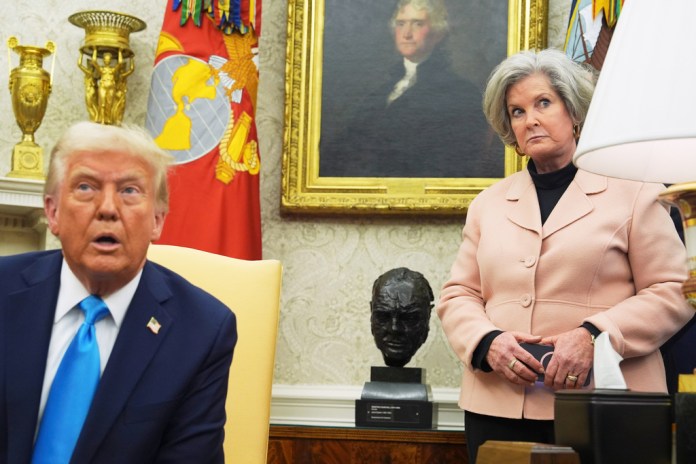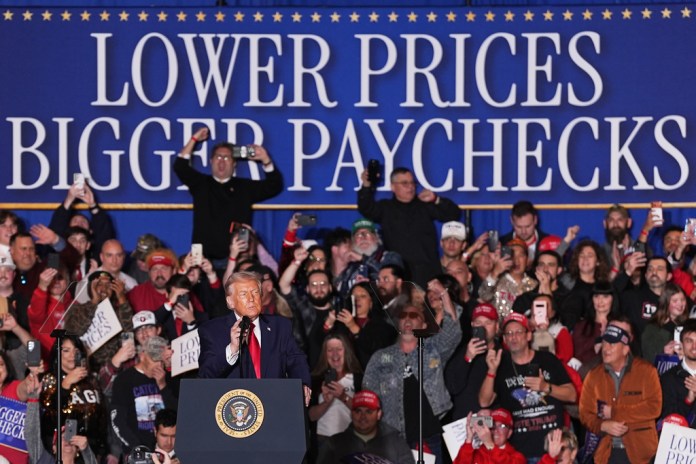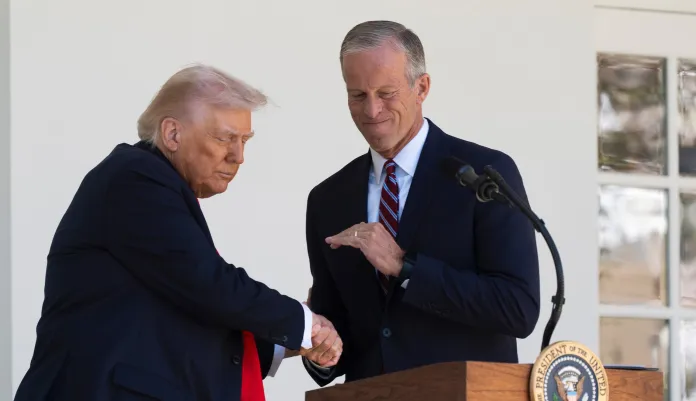Trump in no rush to end shutdown impasse
teh article discusses the ongoing federal government shutdown in the united States, highlighting that President Donald Trump is not in a hurry to resolve the impasse. Unlike the partial shutdown of 2018-2019, the current shutdown resembles the complete shutdown of 2013, affecting all agencies and resulting in nearly 800,000 employees being furloughed. Trump is using the shutdown strategically to advance his agenda by shrinking the federal workforce and reducing federal spending, particularly targeting programs favored by Democrats such as infrastructure tied to climate initiatives and international advancement. The administration, led by Russ Vought at the Office of Management and Budget, is carefully managing layoffs and furloughs with plans to redefine the baseline size of government. Court rulings have temporarily blocked some of the firings, but the administration continues to push forward. Politically,the shutdown is framed as a fight against government waste and “Washington bloat,” aiming to rally Republicans and portray Democrats as defenders of special interests. Trump is betting that the political fallout from the prolonged shutdown will hurt his opponents more than himself and is using the crisis to shift the balance of power toward the executive branch and reshape the role and size of the federal government.
Trump in no rush to end shutdown impasse
As the country heads into November and the end of daylight saving time, the federal government remains shut down, with no signs of when it will reopen.
The 35-day shutdown in 2018-2019 was partial. Congress had passed, and President Donald Trump, in his first term, signed several appropriations bills. This one is similar to 2013, which was a complete shutdown. And like then, this one affects all agencies and requires furloughing nearly 800,000 employees.
The one person who does not seem to be in a hurry to reopen the government is Trump. He is utilizing it as an opportunity to further his agenda and expand the power of the executive branch. It was Elon Musk and the Department of Government Efficiency that got the ball rolling on government firings. But that effort led by the mercurial billionaire was effectively a bull in a government china shop. It was haphazard and messy. They shut down websites, fired people on a whim to reach specific numbers, while offering up inflated “savings” figures.
Russ Vought, head of the Office of Management and Budget, is taking a more methodical approach during this shutdown, one that the administration openly said it would adopt if the government did not reopen. Furloughed employees, who did not receive paychecks during the shutdown, will resume their pay and receive back pay when the government reopens. Laid-off federal employees will have no such luck.
The administration sent widespread reduction-in-force notices to 4,000 employees on Oct. 8, informing them that their roles were terminated. Vought, appearing on The Charlie Kirk Show episode that was broadcast from the White House, said, “I think it will get much higher. I think we’ll probably end up being somewhere north of 10,000.”
A federal judge temporarily blocked the administration from carrying out some of the firings. Still, the administration argued that many of the layoffs were not affected by the order and planned to move forward. The judge then expanded her order to include more employees that the administration could not dismiss. However, the longer the shutdown goes on, the more time the administration has to work around areas of the order and hope for a successful appeal.
Behind the scenes, allies of the president see the firings not as a stopgap but as part of a broader strategy. By shrinking the federal workforce during a shutdown, the administration is effectively redefining what the “baseline” size of government looks like. If those positions remain vacant when funding eventually returns, Trump officials believe it will be politically harder for Democrats to restore them later — and easier to argue that the federal government can “do more with less.”
Trump and the administration are also targeting spending projects, utilizing the shutdown to halt or reclaim billions of dollars in unspent funds. But more than just a fiscal maneuver, it’s a political play. By targeting programs that have long been priorities for Democrats — infrastructure grants tied to climate initiatives, arts and humanities funding, international development programs, and other discretionary spending — Trump is sending a clear message that he intends to reshape the federal government, whether Democrats are part of the conversation or not.
The White House is framing these cuts as a fight against “waste” and “Washington bloat,” language designed to rally Republicans and put vulnerable Democrats in a difficult position as the shutdown drags on. It’s part of a strategy that goes back to former President Barack Obama’s administration, in which the thinking is, “We’re not going to sit around and wait for Congress to figure this out.”
For Trump, the shutdown isn’t just a crisis to deal with but a chance to further reshape the balance of power. With the legislative process at a standstill, he has space to act and to portray Democrats as defenders of what his allies dismiss as “pet projects” and “special interests.” That framing is already gaining ground in conservative media, where hosts and lawmakers accuse Democrats of holding federal workers “hostage” to protect spending priorities Trump has vowed to eliminate.
TIM SCOTT BALANCES SENATE POLICY AND GOP POLITICAL ROLES
The longer the shutdown lasts, the more that narrative benefits Trump politically. Even if some of the claw-backs are ultimately reversed once the government reopens, the president will have succeeded in drawing clear lines around where he stands on federal spending — and where Democrats stand in defending it. It’s a dynamic that mirrors earlier fights over border wall funding and immigration policy, where Trump used prolonged standoffs to rally his base and portray Washington as fundamentally broken.
This time, however, the fight isn’t just over one issue. It’s over the scope of the federal government itself, and Trump is betting that the political pain of keeping it closed will fall harder on his opponents than on him.
Jay Caruso is a writer living in West Virginia.
" Conservative News Daily does not always share or support the views and opinions expressed here; they are just those of the writer."




